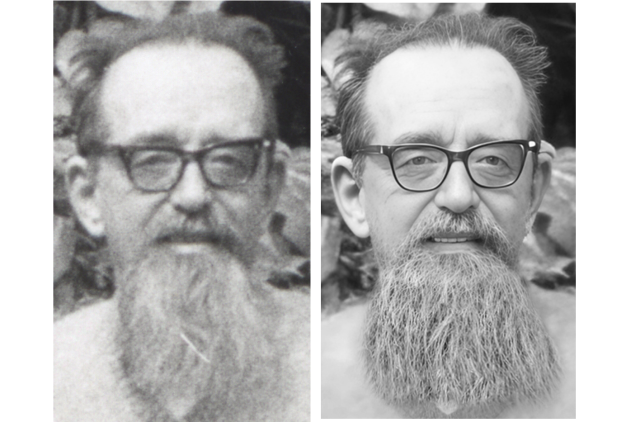On the left is cropped from the original (untouched) black & white photo;
On the right is cropped from my family's photo at:
Overgrown with plants, the Mother Mary grotto at St. Joseph's Church, Fanling | Gwulo
The photo on the right was restored using AI tools, or what the photo restoration studio I go to calls "face-fixing software".
Admin refers to this software in the post:
As is mentioned in Admin's post, results vary, and some people ask, "Why bother?"
Some people would criticize using the software but one could give a counter-response, "Why not?"
The original black & white photo of Father Poletti with my family is blurry, it has a scratch on his beard, and it has an unsightly long scratch that goes across his body.
Wherever Father Poletti is, I am sure he does not mind that the image of him has been improved upon.

Comments
It's interesting. You will…
It's interesting. You will get different views depending on who you ask and what the purpose it's for. As a historian I will always use the original as it can be clearly seen the AI version has added changes that were not there in the original. However, I can equally see the potential of how the AI version may uncover new clues that could lead to new original discoveries or enhance research.
The photo restorer said that…
The photo restorer said that he prefers to make photos from the negative, if available, because that is the original image.
I suppose the AI software can be seen as being just a bit of fun.
Re: working on post processing of photos
Hi there,
I don't usually do post processing and I only shoot Jpeg. I don't want to use Photoshop or Lightroom as Adobe had evolved into a greedy bastard over the years. As for scanning very old photos, I also tend to try NOT to modify the files. There are limitations of what can be done. Maybe a little bit of "de-noise" but that's about it.
My 2 cents of biased opinion.
T